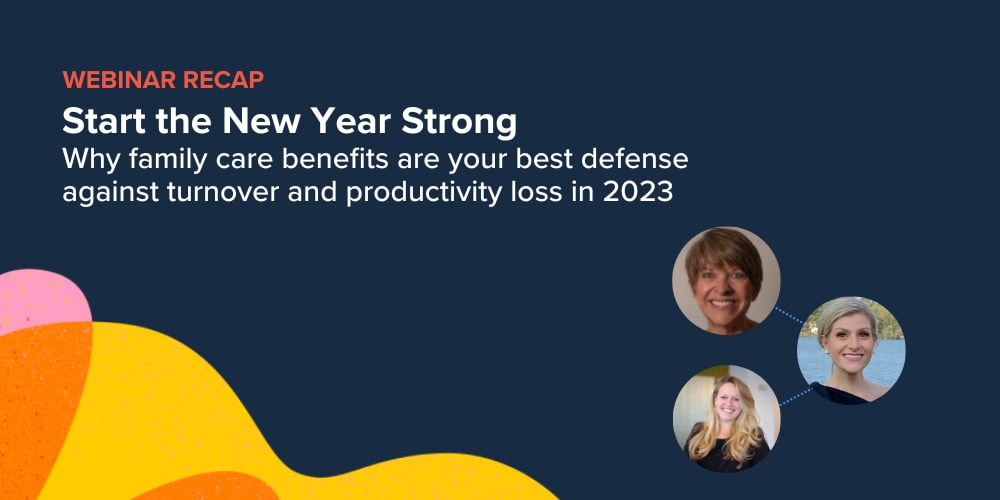Nothing better illustrates the impact of caregiving on employee retention and, therefore, on overall economic growth, than the mass departure of women from the workforce during the pandemic.
A survey of 500 Human Resource leaders and C-suite decision-makers, recently conducted by Care.com, reveals that many companies are abandoning the “nice to have” benefits critical to a centralized workforce (such as free lunches and commuter benefits) in favor of benefits that have greater impact on the way we work today and will continue to work tomorrow.
Between April and August of 2020, 10% of working mothers reported not working each week because they were providing care to a child who was not in school or child care . During roughly the same time period, McKinsey and Company, in partnership with Lean In, surveyed more than 40,000 employees from 47 US and Canadian companies. What they found was shocking. “1 in 4 women were contemplating what many would have considered unthinkable less than a year ago: downshifting their careers or leaving the workforce.”
This preview was disturbingly accurate. By September of 2020, at the start of a school year that for many began remotely, four times more women than men left the workforce. And by December of 2020, the situation only worsened; the net of 140,000 jobs lost that month were held entirely by women, primarily by women of color. As of this writing, nearly 3 million American women have left the labor force since the start of the pandemic. Given that Black and Latina women are disproportionately represented in service and hospitality – two industries particularly damaged by the pandemic – this even more disproportionate impact is sadly unsurprising. And because these jobs cannot be done remotely, these same workers are faced with the impossible choice between working and caring for children whose schools and child care centers are still closed.
Echoing other studies, almost 2/3 of the respondents in our study have seen COVID-19-related attrition. And of that group:
• 95% say that child care or senior care concerns have been a factor (with 56% saying they have been a “strong factor.”)
• 71% say that attrition has been more pronounced with female employees (with 24% saying it has been “much more” pronounced for females.)
Not surprisingly, those most worried about attrition – and specifically about the loss of female talent – see expanded child care benefits as the key to combatting it.
The McKinsey/Lean In study identified several factors that are predictive of whether an employee considers cutting back or leaving, including:
• Lack of flexibility at work
• Feeling like they need to be available to work at all hours, i.e., “always on”
• Housework and caregiving burdens due to COVID-19
• Worry that their performance is being negatively judged because of caregiving responsibilities during the pandemic
• Feeling unable to bring their whole self to work
While all of these are problematic across the board, many of them are disproportionately experienced by women. And though employers cannot rectify all of them, if they are serious about retaining women, they must acknowledge and try to address them through training, policy, and adjustments in benefits.
But employers alone cannot solve this problem. Companies must become political advocates for themselves and the women they hope to hire and keep. Innovations like an expansion of publicly funded child care centers and tax credits for companies that rehire women who left the workforce during the pandemic can have an enormously positive impact, as well.
Read the full report here.



